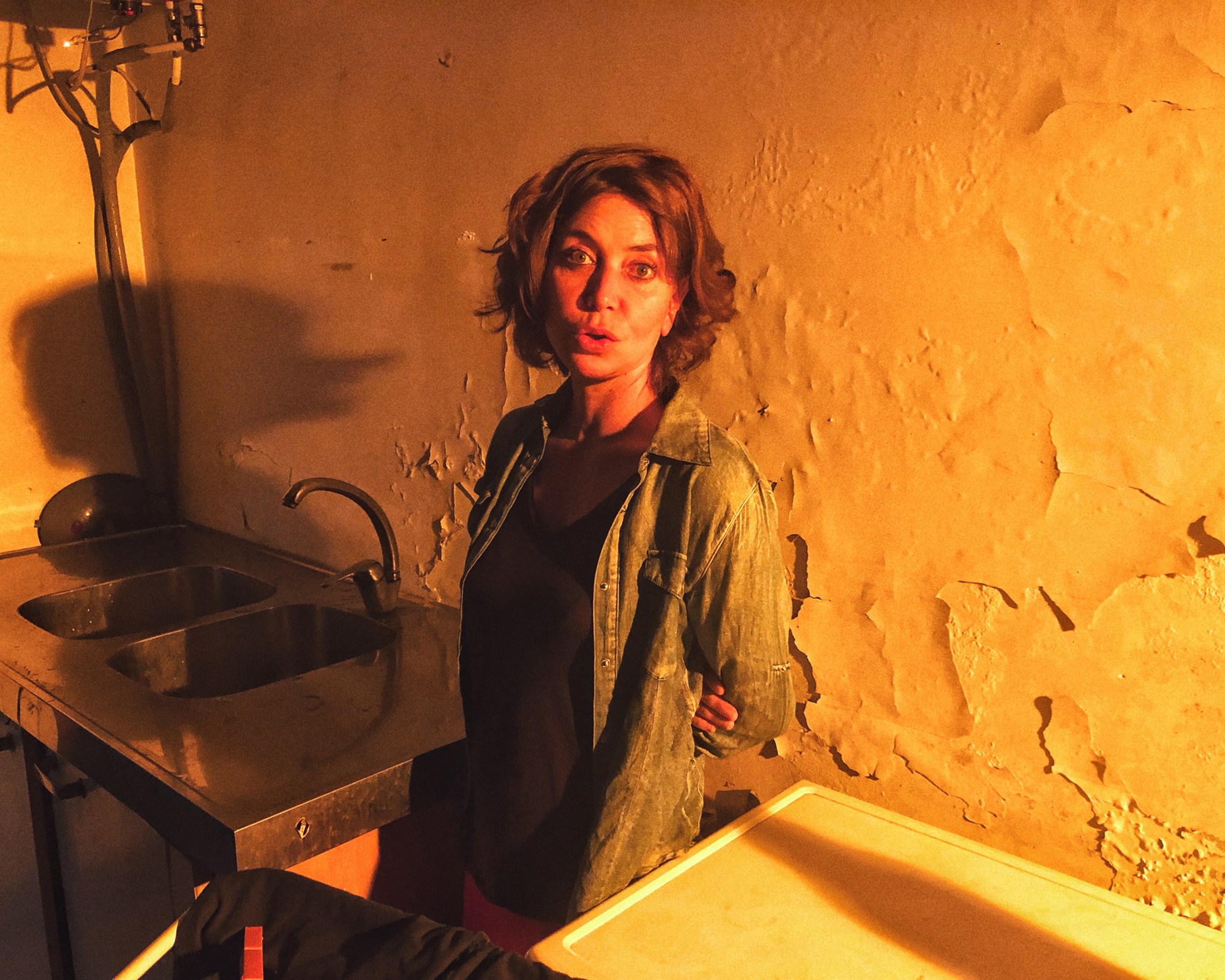
- Interviews
A Conversation About Homelessness: Sabina Guzzanti’s “Spin TIme”
“You could summarize Spin Time as a documentary about the poor as you’ve never seen them before,” says Italian author, stand-up comedian and satirist Sabina Guzzanti, known internationally for her 2005 documentary Viva Zapatero! Her new film, Spin Time, subtitled How Tiring Democracy Is!, had its premiere at the Venice Film Festival last September and will be screened in New York in early December. “The film portrays the world of the invisible poor, who refuse to play the victims here,” says Guzzanti, who is famous in Italy for her parodies and hilarious impressions of Italian politicians (her Berlusconi is a classic). “Instead, they make an admirable attempt – although it’s often doomed to failure – to live with dignity, as a political entity with their own culture.”
Guzzanti’s film follows the plight of 450 immigrant squatters who in December 2012 began to occupy a large state-owned building in the heart of Rome, in the San Giovanni neighborhood close to the Coliseum: known as Spin Time, the building and its occupants have become a sort of idealistic collective aiming towards Utopia and have been aided by none other than the Pope, whose interventions have ensured that the city has kept providing gas and electricity there. It has become a cause celebre for pro-immigrant advocates, at the same time bringing the inevitable vitriolic and sometimes violent counter-reaction from the extreme right. We spoke to Guzzanti in Rome.
Sabina, how did your involvement with this project come about? You’ve been studying these people for years now, correct?
Actually, I wasn’t directly studying the story of this building. I had gone there a few times, but I didn’t know much about it. I went there when the city cut off the building’s electricity to show the occupants my solidarity. Shortly after the people got their electricity back, I met the Brazilian woman who runs an experimental theater in the basement of the building: it was then that I thought, “I could make a movie about this”.
Can you tell us about the making of this documentary?
I only met the residents after I had started preparing to work on the film. I spent four months talking to everyone, listening to their stories, even the bad ones, and in the end, this allowed me to understand how life really was in there. Then I took another month so I could write a draft and add some scenes to provide a re-enactment of some of the incidents I had observed; I decided which scenes were essential so that once we had decided what the main themes were going to be, we could create a reasonable working schedule. I built a relationship of trust with the residents over the span of several months – that was the year before Covid – and we got to know each other.
The film includes a variety of both plays and re-enactments of real-life scenes, in which resident kids act, and in which you even appear yourself: were these specifically written for the film?
They were made ad hoc for the documentary. I had already worked with some students for Spin Time
There is also a scene in which the committee elected to run the building scolds a lady because she cooks, and the smell of the food bothers her neighbors on the same floor. Was that scene also “set up?” Yes, those were scenes that I re-enacted – using the same people of course – based on the stories told by the residents from which I wrote the script. It’s a mixture of totally spontaneous scenes and re-enacted ones. This is what the whole story is about, the interaction between film and reality, theater that blends itself with film and other forms. Where does the story of this building fit into the political struggles that are taking place currently, and how accurately does it depict what some people go through today? I refer to immigrants, people who struggle with full integration, the homeless, people who can’t pay rent: can this film be presented as an example of how to help them? It’s certainly a model. In Rome, there are many occupied buildings, and there are also cultural associations helping them, but usually, these places are closed to people outside, and situations also get somewhat violent. But this is surely a model for how a situation can be handled peacefully. It’s a problem that any other big metropolis faces – the housing situation. There are countless people who don’t have a home, and there will be more and more. The entire problem is in the hands of volunteers. Giving legal advice, helping with filling out paperwork, this is all volunteer work. The homeless situation here in Los Angeles is critical: what can be done to mitigate it here? I am not sure about Los Angeles: I am not sure if the Spin Time model can be applied to L.A. But in Rome, there are many abandoned buildings that can be utilized by people in need. My film presents this story in all its complexity: poverty is not a condition of the human spirit, it’s a tangible situation that can happen to both bad and good people. And in the end, it’s the volunteers who step up and help, never the government.